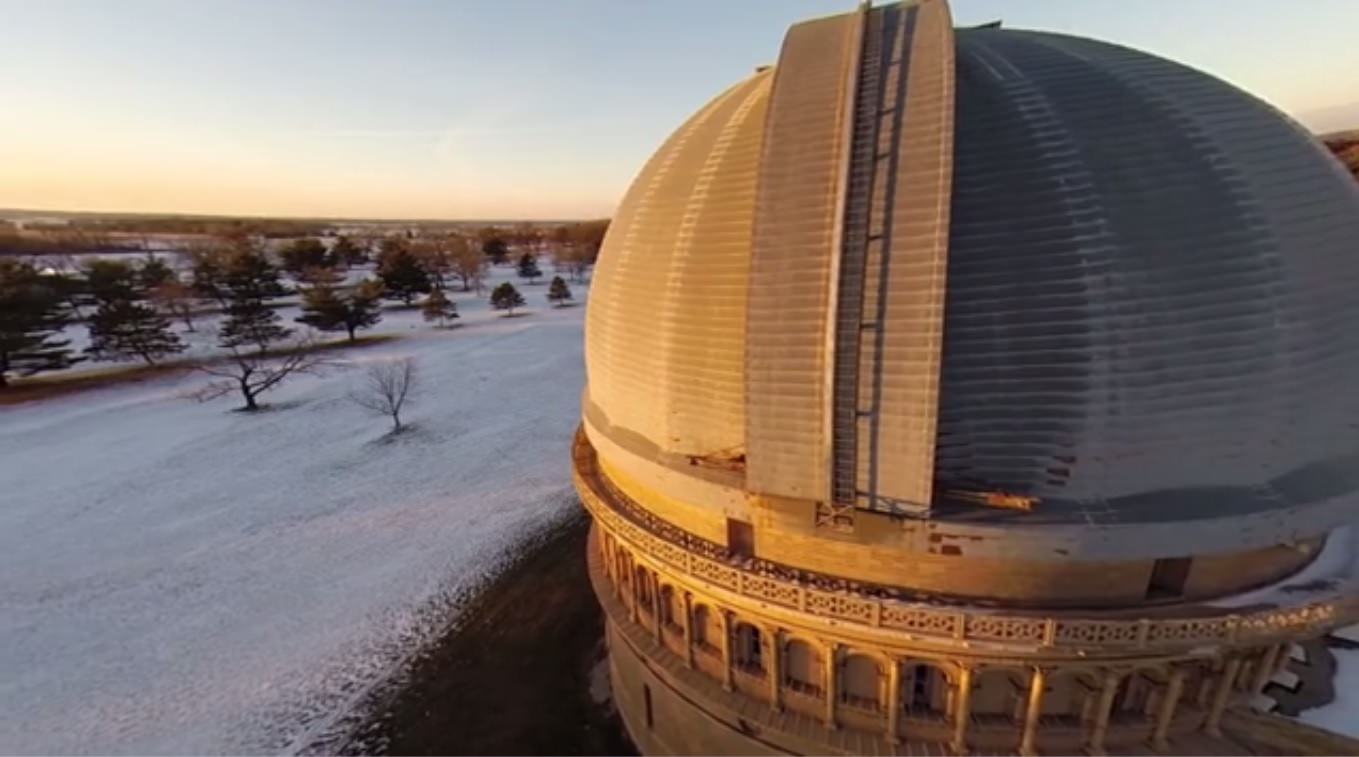It’s hard to do many types of astronomy in the daylight, so that can be a good time to do a different kind of observing — enjoying the architecture of the telescope! This new video shot by a drone shows off Yerkes Observatory in snowy Williams Bay, Wisconsin. The video was uploaded by Adam Novak.
Yerkes, which is operated by the University of Chicago, calls itself the “birthplace of modern astrophysics” because it combined astronomical observations with experimentation in physics and chemistry. That’s something that’s normal in astronomy today, but certainly not in 1897.
Observations began with a 40-inch refractor (billed as the biggest such telescope ever finished) that weighs about 20 tons. While the telescope itself is from the turn of the century, the means of moving it is much more modern — from about 50 years ago, according to a National Park Service book on the observatory:
The telescope was modernized in 1969 permitting more accurate and rapid setting of the position of the telescope. The efficiency of the telescope was further increased by the addition of an automatically guiding camera. The driving clock, by which the telescope is made to follow the stars, consists of a synchronous motor controlled by an electronic oscillator, the frequency of which can he set so as to make the telescope follow the sun, the moon, or stars.
You can learn more about Yerkes on the official website.


Excessive wide-angle shots mess with perspective. Great light and colors though.
Thanks for posting this. I serve as a docent at Mt. Wilson Observatory during the milder mountain seasons, and these close ups of the Yerkes say much about the aesthetics of George Ellery Hale who is such a big part of my presentation. Hale had been to Italy, liked Italian poetry and created not a dormitory for the astronomers at Mt. Wilson as was built at the Lick Observatory but a “monastery” for sleeping astronomers. While the telescopes on that mountain are coldly industrial in style, the Italian styling of the Yerkes facility I had yet to see close up informs me as to why Hale also contributed so much to the Pasadena Area’s architecture. Its famous city Hall building and surroundings were partly through his influence, and Hale was also influential in getting Mr. Huntington to create his lovely Library and gardens on his estate in San Marino, one of the worlds best research libraries. Truly a Renaisance man of his age, and this video shows it well.
Nice old Observatory!
Pretty sure that was the one Keanu Reeves and Rachael Wiesz were on the roof of in Chain Reaction.